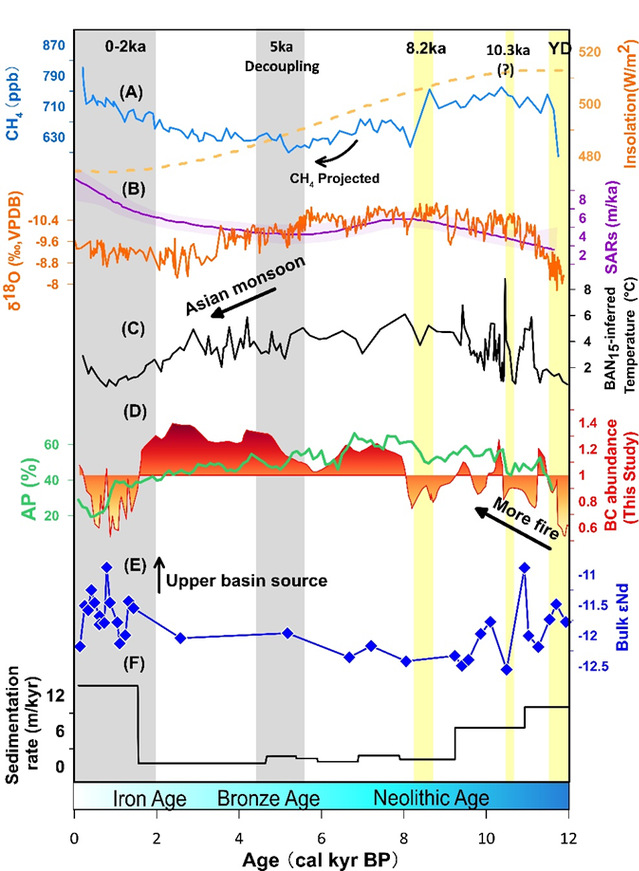Qiang Haoab, Min Tangc, Xiangtong Huanga, Chi Zhanga, Shaohua Dang a, Shouye Yanga
a State Key Laboratory of Marine Geology, Tongji University, Shanghai, 200092, China
b The Engineering & Technical College of Chengdu University of Technology, Leshan, 614000, China.
c School of Earth Science, Yunnan University, Kunming, 650500, China.
Abstract:
Deforestation and technical innovation have changed the natural fire regimes, topography and carbon reservoirs during the history of human evolution. Recognition of the timing, scope, and magnitude of wildfire events in large river basins such as the Changjiang (Yangtze River) is essential for understanding the impacts of climate forcing and human perturbation on Earth surface processes. Here, we present a multi-proxy study based on the pollen and black carbon (BC) abundance in sediments of Core CM97 taken from the Changjiang Delta, aiming to reconstruct the paleo-fire history in the Changjiang River Basin and further disentangle anthropogenic and climatic influences on fire regimes during the Holocene. Our results show that the average BC abundance increased from 0.88‰ at 12-8 cal kyr BP to 1.17‰ at 8-5 cal kyr BP, well corresponding to the evolution of the Asian Summer Monsoon (ASM). This suggests the wildfire occurrences were dominated by hydroclimatic conditions during 12-5 cal kyr BP. After the early Bronze Age (~5 cal kyr BP), the sustained high anomaly of BC abundance (average 1.30‰), however, was decoupled from the weakened monsoon climate. We propose that this might be associated with anthropogenic destruction of natural forests through fire-assisted agriculture and bronze smelting. Especially, with the prosperity of the Han Dynasty (202 BCE - 220 AD), a rapid increase in population promoted the transition of ecosystem (vegetation type) from forests to permanent farmlands in the drainage basin. Human intervention has overwhelmed the long-term climate control over wildfire, plant diversity, soil erosion, and sediment source-to-sink processes, suggesting the dominance of anthropogenic activities on nature over the last 2 kyrs. Our study provides deep insight on the enhancing perturbation of human activities on Earth's surface at a continental scale and provides more constraints on the Anthropocene epoch.
Full article:https://doi.org/10.1016/j.catena.2024.107998



